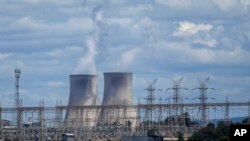Once seen as an international environmental laggard, Australia on Thursday enacted its most significant climate law in a decade. Targeting the nation’s worst polluters, the law will force coal mines and oil refineries to cut emissions. It is the first time pollution reduction has been written into Australian law.
Starting July 1, many of Australia biggest polluters -- more than 200 mines, refineries and other operations -- will be required to cut emissions by 5% each year under a new law passed Thursday by the country’s Parliament.
These enterprises account for about a third of Australia’s carbon pollution.
The law was passed with the backing of the Australian Greens, a minor party focused on environmental protection. It initially demanded that the center-left government ban all new coal and gas developments in return for its support. Later, a compromise was reached. New gas fields developed for Australia’s lucrative export market must offset all CO2 emissions through the purchase of carbon credits.
The Greens have insisted that Australia must soon take more decisive action, insisting that coal and gas “are the main causes of the climate crisis.”
However, Prime Minister Anthony Albanese has said previously that gas would help to “smooth” Australia’s transition to renewable sources of energy.
Gas industry analyst Bruce Robertson, with the Institute for Energy Economics and Financial Analysis, which works to shift toward sustainable energy, told VOA that the Labor government’s stance on gas is outdated.
“They are still holding onto the past,” he said. “They are holding onto gas power, they are holding onto gas as a fuel and gas as a fuel [is] exiting the energy system. It is exiting the energy system in Australia. It is too expensive to use and basically we are seeing a transformation and the exiting out of gas over time.”
Other analysts have said that the climate legislation is key to achieving Australia's target to cut carbon emissions by 43% from 2005 levels by 2030 and achieve net zero emissions by 2050.
This is roughly in step with goals set by the United Nations, and it brings Australia more into line with other countries after what Albanese said was a wasted decade under the previous conservative Australian government.
Fossil fuels continue to generate much of Australia’s electricity but there is a significant shift to renewable sources of energy.
Australia has the world’s highest use of solar power. About a third of its homes have rooftop solar electricity panels. Domestic energy storage is surging, too. The energy consultant company SunWiz said Thursday that the installations of residential batteries increased by 55% to 47,000 units last year.
Scientists have warned for years that a failure to reduce emissions would make Australia vulnerable to more extreme bushfires, droughts and floods.









